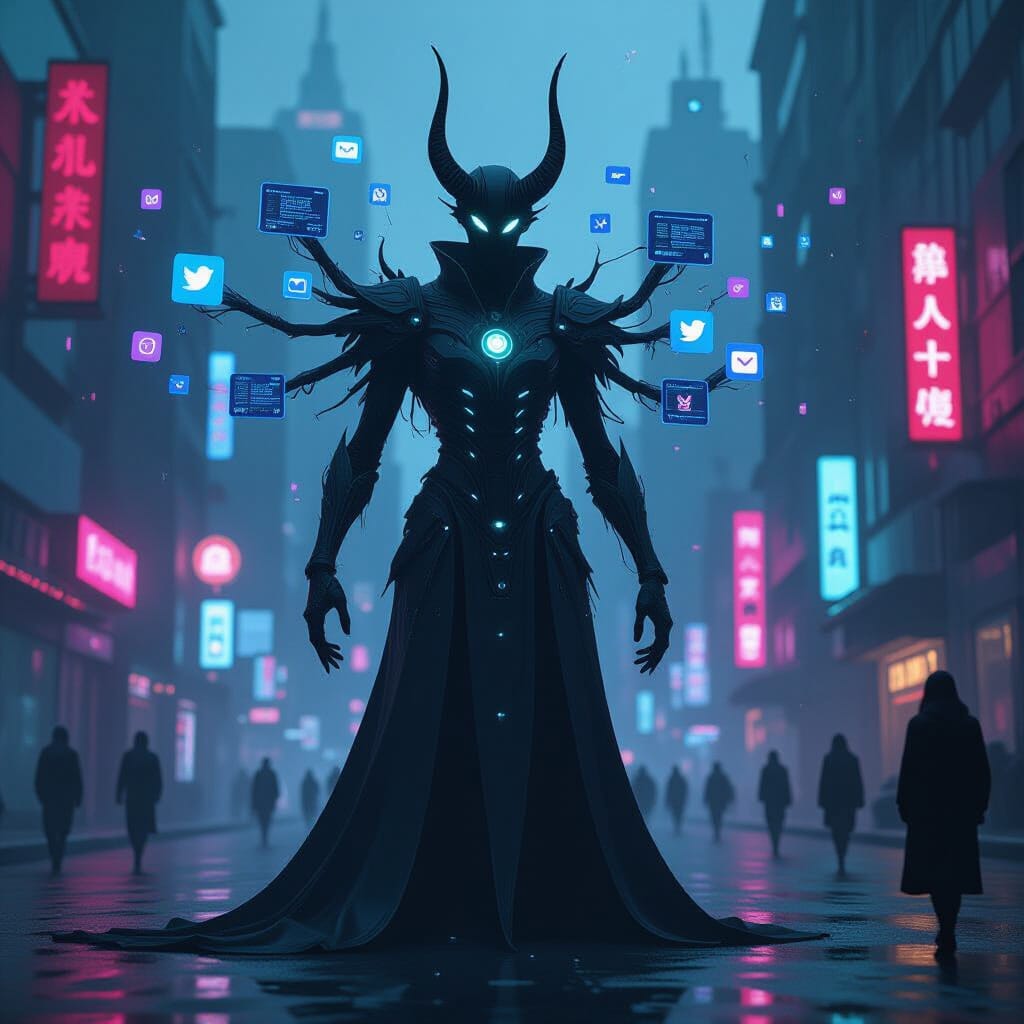The offices of TechOnion, much like the internet itself, possess a peculiar hum—a low-grade thrum of existential dread mixed with the scent of burnt coffee. It was upon this familiar frequency that the latest disturbance arrived, not with a bang, but with a tweet. Or rather, a series of tweets, a digital crime scene so baffling in its contradictions that it demanded investigation.
The particulars of the case were, on the surface, straightforward enough for any amateur observer of our digital age. The subject, one Elon Musk, a man whose public persona oscillates between visionary industrialist and a teenager who has just discovered the reply-guy function, had once again set the global discourse ablaze. First, a sudden, seemingly full-throated endorsement of a political candidate, Donald Trump, which sent shockwaves through the very platform he owns. Then, as the ensuing firestorm reached its zenith, a subtle, almost bored, withdrawal of that same sentiment. And finally, appearing as if from another dimension entirely, a third pronouncement, delivered with the chest-thumping certainty of a carnival barker: Grok 4, his own artificial intelligence, was now, definitively, “the best AI model bar none!”
The public, as is its wont, saw only chaos. They debated, they raged, they attributed the sequence to 4D chess, a mental breakdown, or a simple ploy for attention. But to a seasoned investigator of technological absurdity, this was no mere chaos. This was a pattern. A set of clues. The game, as they say, was afoot. And it was a case that required the meticulous, dispassionate application of logic to solve.
The Clue of the Whimsical Endorsement
One must begin where the crime began: with the political declaration. To the untrained eye, it was a simple act of a billionaire expressing a preference. But we must look closer, for the details are telling. The initial tweet was not a carefully worded treatise; it was a burst of digital shrapnel, designed for maximum impact. The language was casual, almost flippant, yet its effect was akin to detonating a small explosive device in the town square.
The layman immediately jumps to conclusions of grand strategy. “He is consolidating his base,” they cry. “He is courting a political faction!” This is elementary, my dear TechOnionist, and therefore, almost certainly wrong. A true strategist moves with purpose and consistency. A man planning a political coup does not, a mere forty-eight hours later, publicly backtrack with the weary air of someone who has just been reminded of a tedious prior commitment.
No, the evidence here points not to a Machiavellian plot, but to a crime of passion—a passion for engagement metrics. The initial tweet was not a political move; it was a dopamine-seeking missile launched into the heart of the algorithm. The subsequent reversal was not a change of heart; it was the act of a man who, having started a kitchen fire for the thrill of it, was now faintly annoyed that he had to find the extinguisher. The motive was not power, but the Pavlovian need to see the little notification bell glow red. A fascinating, if common, pathology. But it does not explain the third clue.
The Mysterious Matter of the Egotistical AI
Just as the smoke from the political fire was beginning to clear, the subject changed entirely. “Grok 4 is the best AI model bar none!” The proclamation was sudden, absolute, and bore no relation to the preceding drama. It is this non-sequitur, this inexplicable pivot, that provides the key to the entire case. A lesser detective might dismiss it as a clumsy attempt to change the subject, but a true student of the human-tech condition recognizes it as the most significant clue of all.
Consider the nature of the AI in question. While models from Google, OpenAI, and Anthropic are trained on the vast, curated libraries of human knowledge, Grok is uniquely different. It has been trained on the primordial chaos of the X timeline itself. It is not a digital librarian; it is a digital Dionysus, an intelligence forged in the crucible of memes, conspiracy theories, and celebrity beefs. To declare it the “best” is not an objective technical assessment. It is a statement of personal taste, akin to declaring a greasy kebab to be the pinnacle of global cuisine.
The timing, therefore, is crucial. The announcement serves as a perfect distraction, a digital smokescreen. But it is more than that. It is an act of profound self-soothing. Having created a vortex of social chaos he could not control, the subject retreated to the one domain where his word is absolute law: his own products. Within the walls of his own company, he can declare his AI the best, and his employees must nod in agreement. It is a flight from the messy court of public opinion to the comforting certainty of his own kingdom. The Grok tweet is not an advertisement; it’s an emotional support animal.
The Final Deduction: It Was the Tacos
So, we are left with a series of seemingly disparate facts. A chaotic political feint driven by a thirst for attention. A sudden pivot to technological boosterism driven by a need for a safe space. How does one connect these points? Once you have eliminated the impossible—that this is the work of a stable genius—and the improbable—that it is a genuine cry for help from a man who could buy his own therapeutic island—whatever remains must be the truth.
The solution is not a single motive, but a systemic failure. We are not observing the actions of a single, rational mind. We are witnessing a battle for control over a single Twitter account, waged between three distinct entities that inhabit one body.

First, there is The Attention Demon, the part of his consciousness that is symbiotically fused with the algorithm, craving conflict, engagement, and the sweet, intoxicating nectar of online drama. This entity was responsible for the initial political tweet.
Second, there is The Anxious Engineer, the part that genuinely wants to build rockets, tunnels, and AI. This entity is terrified of the chaos the Demon unleashes. It seeks order, control, and the validation that comes from creating a tangible product. The Engineer wrested control of the phone to post the Grok announcement.
But there is a third, critical factor, the one that determines which of the first two entities gains the upper hand at any given moment: The Biological Host. This is the physical man, a vessel of flesh and bone whose internal state is subject to the whims of sleep deprivation, caffeine intake, and, most crucially, his diet.
The conclusion is elementary. The sequence of events is not a strategy. It is a symptom. The initial endorsement was the work of the Attention Demon, unleashed after midnight, likely fueled by a large Diet Coke and a sense of boredom. The ensuing backlash triggered a spike in the Host’s cortisol levels, weakening the Demon and allowing the Anxious Engineer to take command of the neural pathways. The Engineer’s immediate, panicked response was to change the subject to the only thing that felt safe and good: his AI.
The wild oscillation between political fire-starter and tech evangelist is not a reflection of a complex worldview. It is the digital manifestation of a metabolic rollercoaster. We are not decoding a political philosophy; we are tracking the digestive journey of what was, in all probability, a very questionable taco.
Thus, the case is closed. The public can rest easy, not because there is a grand plan, but because there is no plan at all. We are simply observers of a man wrestling with his own internal demons, both digital and gastric. His timeline is not a window into the future of civilization, but a far more intimate document: a cry for help from a digestive system that has simply had enough.
What do you think? Are we witnessing a master strategist at work, or should someone introduce this man to the soothing, predictable comforts of a high-fiber diet? The floor is yours.
Tired of Guessing What It All Means?
If you’ve ever stared at the pronouncements of a tech billionaire and felt like you’re trying to read tea leaves at the bottom of a Red Bull can, you’re not alone. The world of tech has become a chaotic circus, and it’s hard to tell the ringmasters from the clowns.
For a decoder ring to this madness, my book, “The Subtle Art of Not Giving a Prompt,” provides the philosophical toolkit you need to thrive. It’s a guide to admitting that most of what you fear is wrong, and the man tweeting about his AI’s supremacy is probably just having a weird day. Find it on Amazon and arm yourself with the sanity you deserve.





GIPHY App Key not set. Please check settings